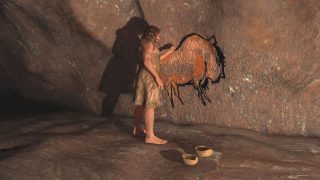The newly discovered stones from the Stone Age in a village near Chennai in Tamil Nadu could challenge the popular scientific theory that Middle Palaeolithic was brought to India by modern humans dispersing from Africa. The new evidence suggests that the Middle Palaeolithic culture was present in India around 3,85,000 years ago while the people from African came only around 1,25,000 years ago or later. Middle Palaeolithic period is considered an important cultural phase as it is associated with modern humans, Neanderthals and other archaic hominins. Scientists used stone tools of this period for studies of early human behaviour.

Women Travelled to Spread Culture, Men Stayed at Home During Stone Age
With the latest discovery of stone tools from the older period it is that the Middle Palaeolithic culture was in India quite prior to scientific beliefs. The new study was published in the international scientific journal Nature on Wednesday. Professor Shanti Pappu of Sharma Centre for Heritage Education, who led the research team, told India Science Wire, “Our study presents a paradigm shift in thinking about the origin and spread of Middle Palaeolithic cultures in South Asia, suggesting a far greater antiquity and more complex story than we thought.”
The evolution of humans in Eurasia is often determined by changes in toolkits. At Attirampakkam, researchers studied over 7000 stone artefacts from Middle Palaeolithic layers which depicts difference from Acheulian technologies towards Middle Palaeolithic strategies. Some of it includes swift from Acheulian technologies towards Middle Palaeolithic strategies like stone-knapping known as Levallois technique and blade technologies.
Pappu added saying, “Without fossils, we cannot pinpoint the species, but we can suggest that multiple hominin dispersals associated with Middle Palaeolithic culture were occurring far earlier than around 125 thousand years ago with complex patterns, processes and interactions between species.” The study suggests that Middle Palaeolithic culture in India began long before modern human migrations out of Africa. These migrations may have then occurred earlier than previously thought and played a role in the development of the Middle Palaeolithic culture in India.
In 1863, the archaeological site at Attirampakkam was discovered by R B Foote and investigated by several scholars in the 1930s and 1960s. Professor Pappu and Dr Kumar Akhilesh from the Sharma Centre have been excavating at this place since 1999. The present work was conducted in collaboration with Professor Yanni Gunnell from the University of Lyon, France; Prof Ashok K Singhvi, Haresh M Rajapara and Dr Anil D. Shukla from the Physical Research Laboratory, Ahmedabad.